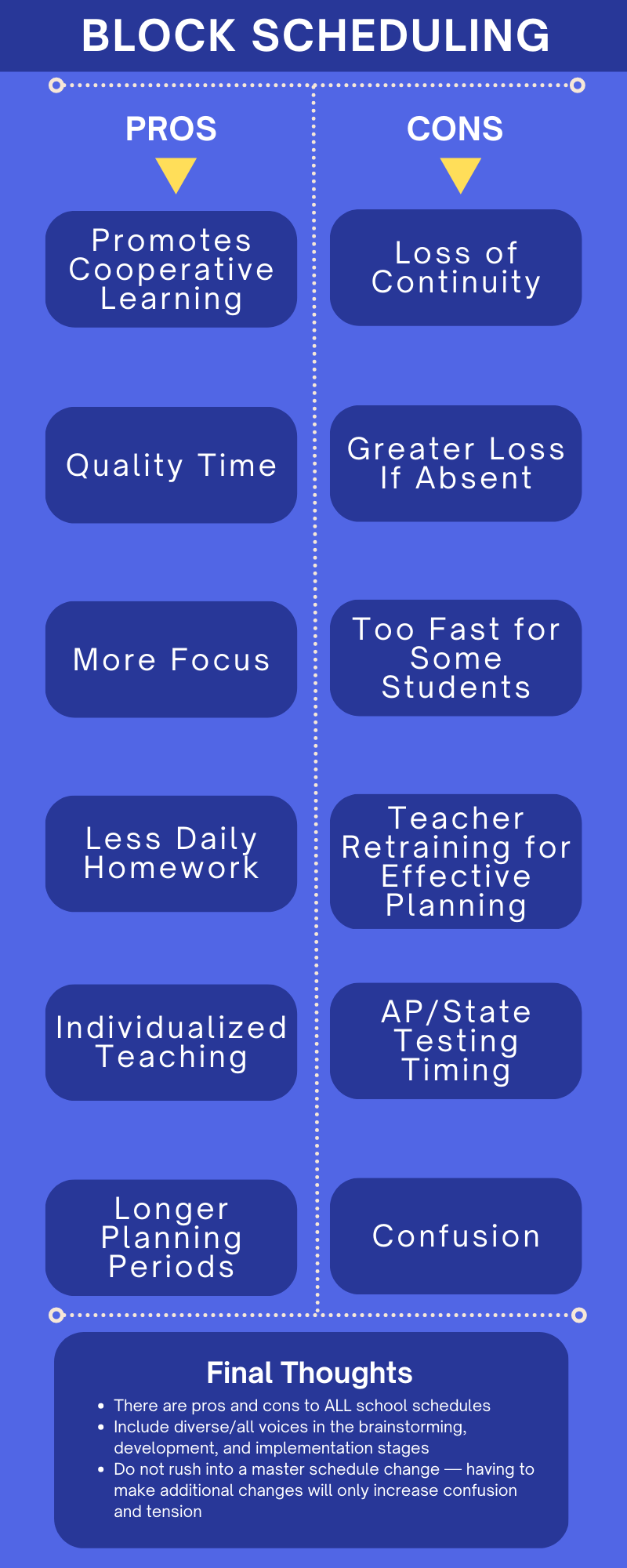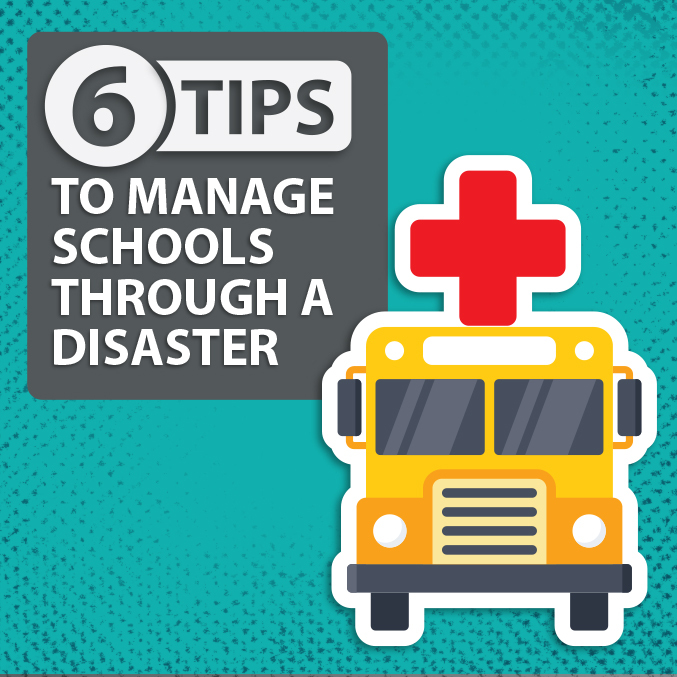Foster Relationships and Cooperative Learning: Adopt Block Scheduling At Your School

While many schools have experimented with . . . daily schedules, the vast majority of U.S. schools still have traditional schedules . . . that often can’t meet the individual needs of students and teachers. This is especially ironic given the profound shifts in how most Americans now structure their personal and professional time, which is more flexible, more fluid, and more personalized than ever before.
– Unlocking Time

INTRO
There is no single best school schedule; if there were, all schools would be using it! With that said, we do believe block scheduling is better for fostering and nurturing relationships for both teacher-to-student and student-to-student relationships.
OBJECTIVES
- Reflect on your own master schedule
- Review and reflect on if your school/district would benefit from a block schedule
RESOURCES
- WEBSITE: Unlocking Time – A Practical Guide to Common Bell Schedules (there are 6 different block schedules explained)
BLOCK SCHEDULE BASICS
In terms of teacher-to-student relationships, block schedules can afford smaller loads.
- For example, a trimester schedule has teachers teaching 4 classes with a total student load of approximately 120 students. Compare that to a traditional two by seven semester schedule where teachers often teach 6 classes with a total student load of approximately 180 students.
- In a traditional two by seven semester schedule, teachers often have 1.8 minutes per student per class period. In a 4×4 block, teachers have approximately 3 minutes per student per class.
- Block schedules offer larger chunks of time per class than the traditional two-by-seven schedule
Block schedules better support instructional practices that engage students with each other through project-based learning, cooperative learning practices, and other sustained group work.
- Students are more likely to be working together collaboratively on complex tasks in block schedules.
- When it comes to relationship building, relationships are best supported in some form of block schedule, assuming the practices teachers/staff engage are focused on relational strategies.

REFLECTION
- Reflect on your current master schedule:
- What’s working well?
- What complaints/concerns are there?
- When was the last time significant changes were made to the master schedule?
- What barriers do you foresee there being in changing the master schedule?
- Brainstorm:
- What benefits can you anticipate your school experiencing with a block schedule?
- What challenges would your school community need to prepare for and overcome with a block schedule?
- If you know any schools/school leaders who use or have used a block schedule, reach out to them for insights, ideas, etc.
TIPS
- After reviewing some of this information and reflecting on your own, start with introducing the idea to your leadership team.
- Big Plays are substantial efforts that take 6-18 months to fully accomplish.











Responses